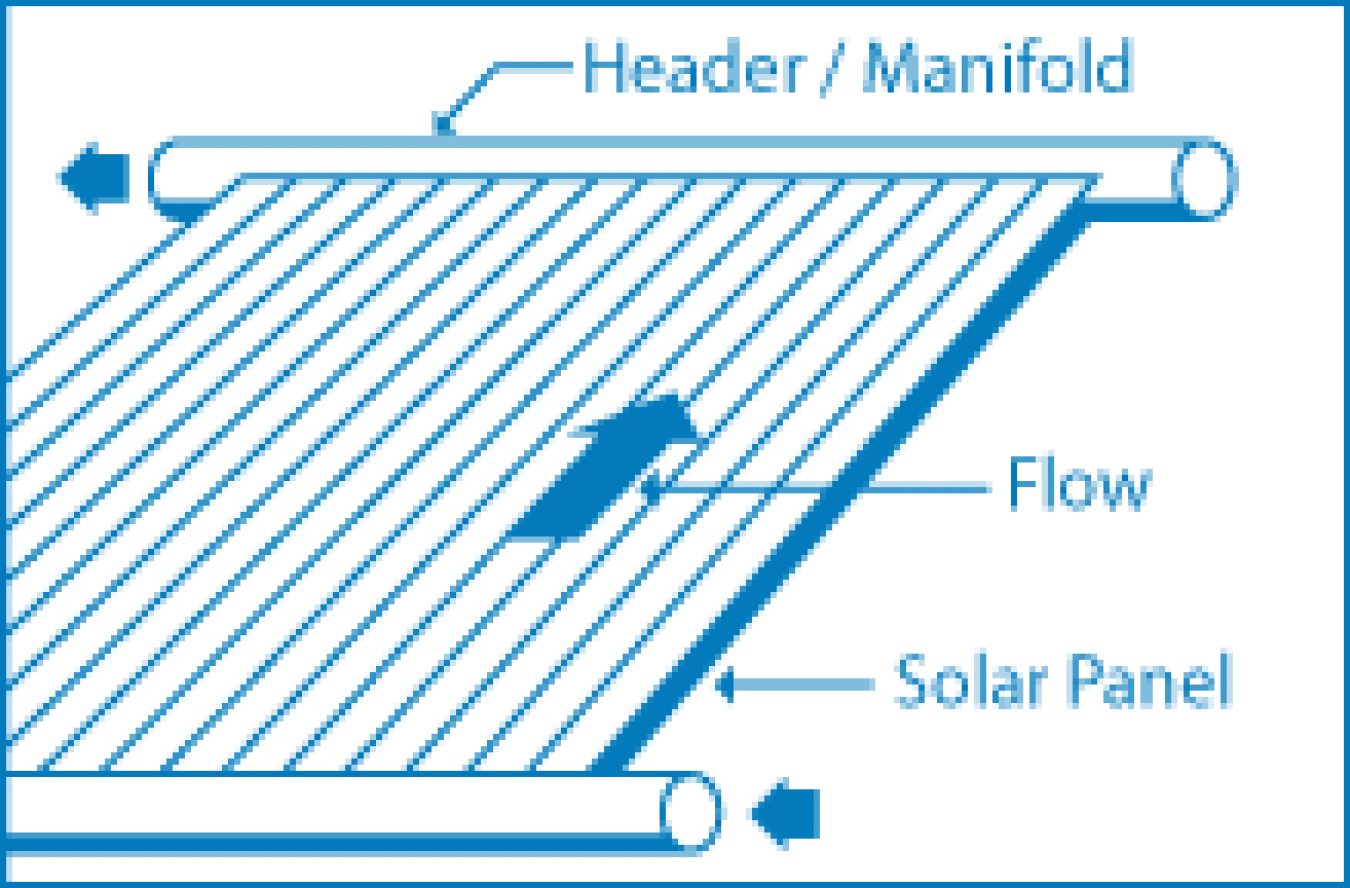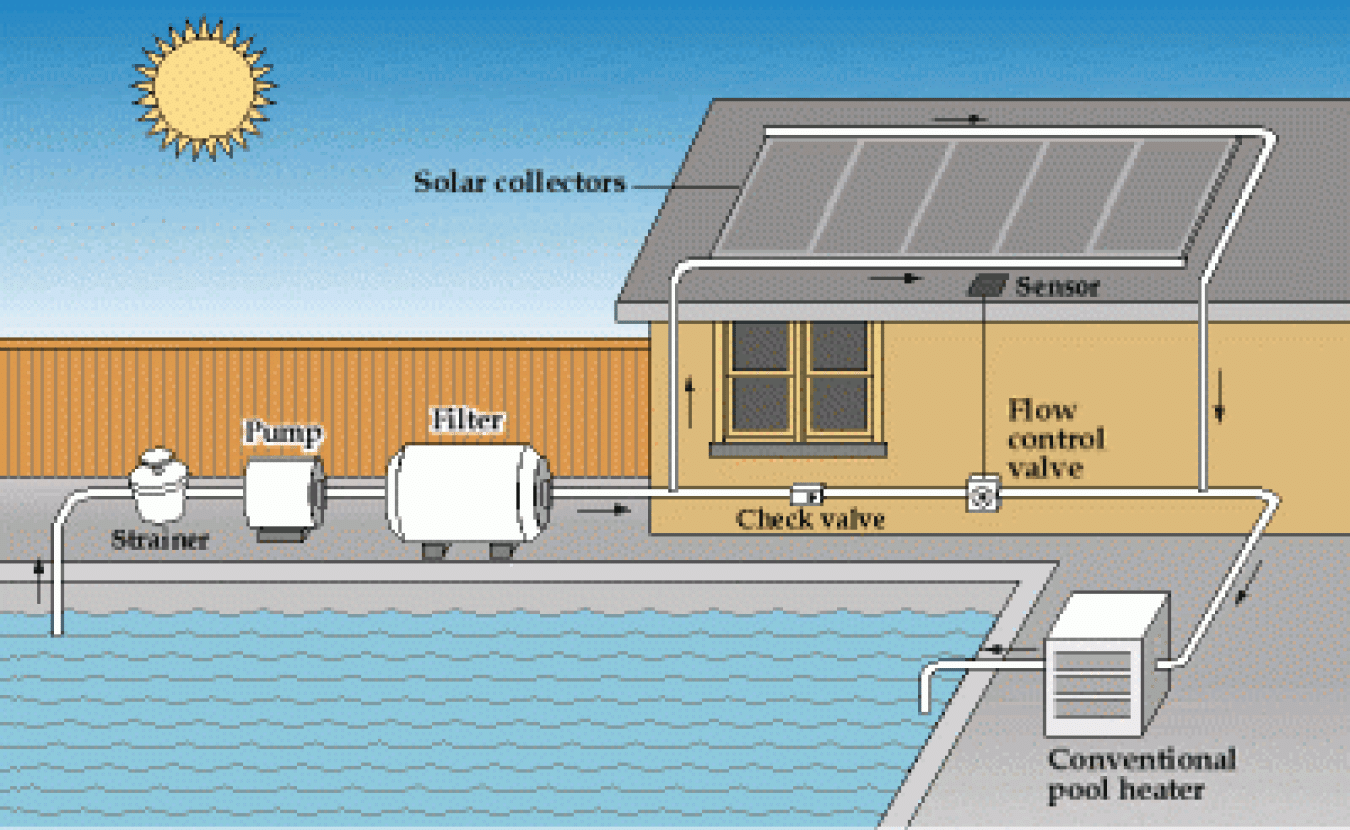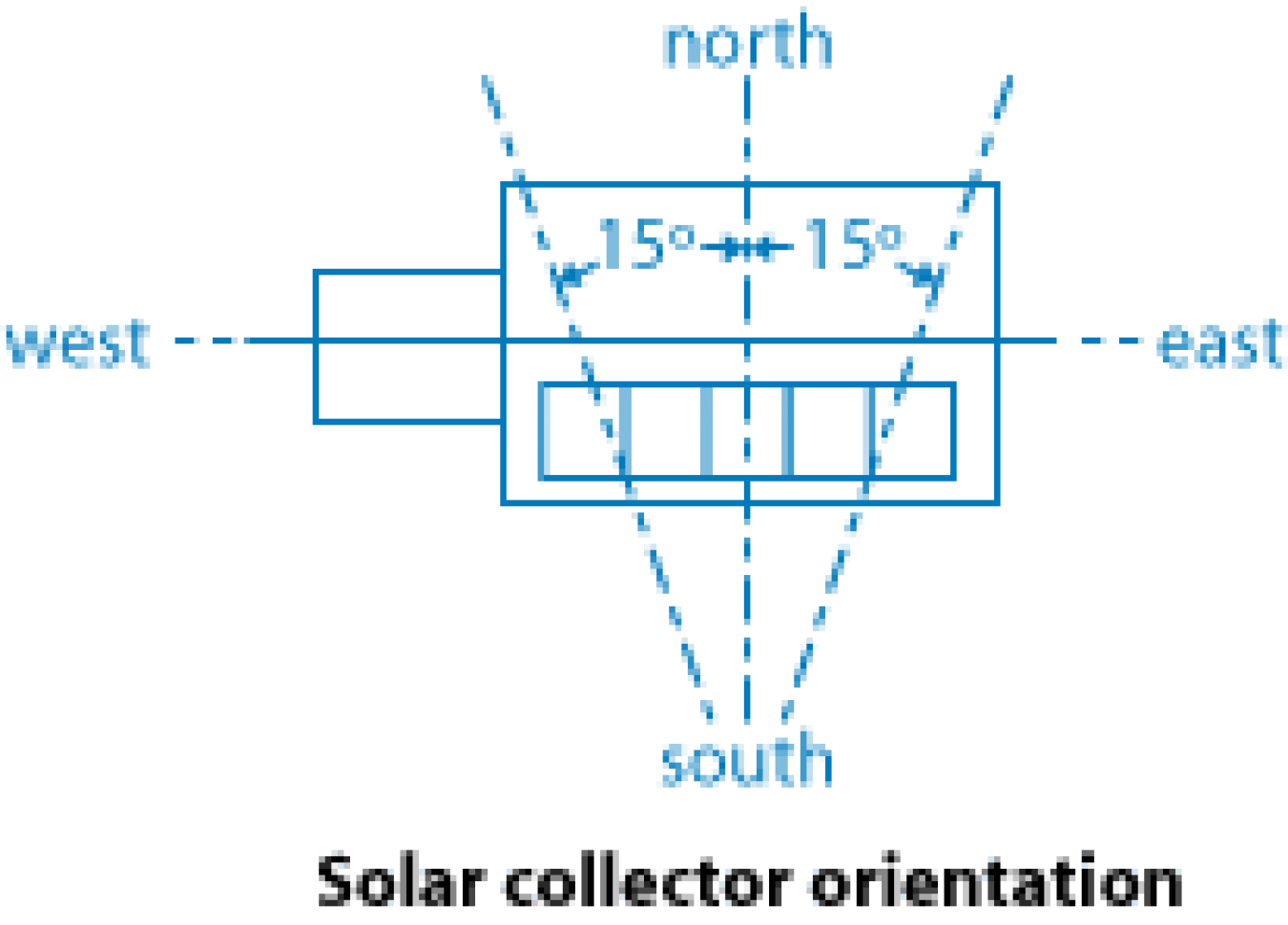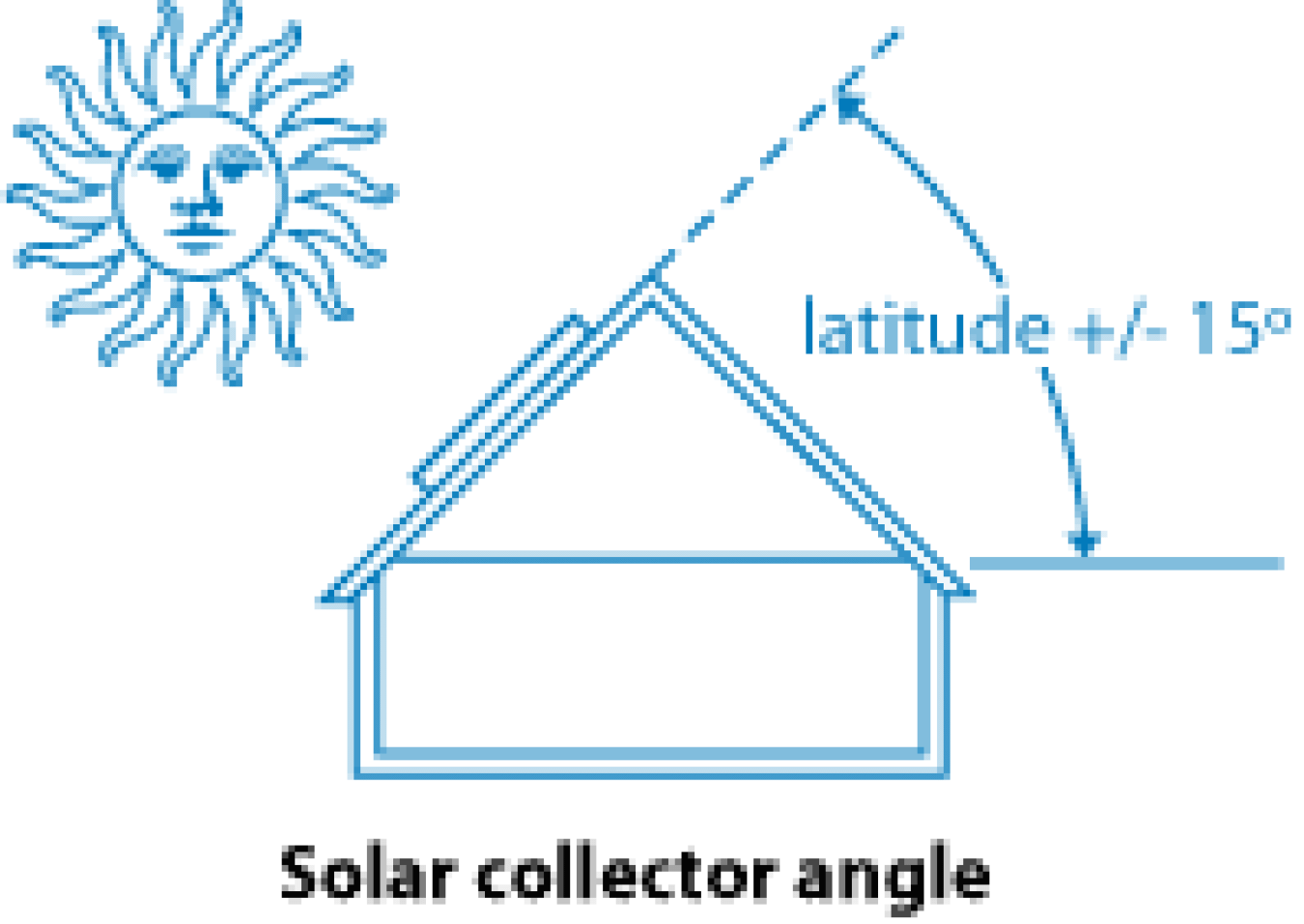You can significantly reduce swimming pool heating costs by installing a solar pool heater. They're cost competitive with both gas and heat pump pool heaters, and they have very low annual operating costs. Actually, solar pool heating is one of the most cost-effective use of solar energy in some climates.

How They Work
Most solar pool heating systems include the following:
- A solar collector -- the device through which pool water is circulated to be heated by the sun
- A filter -- removes debris before water is pumped through the collector
- A pump -- circulates water through the filter and collector and back to the pool
- A flow control valve -- automatic or manual device that diverts pool water through the solar collector.
Pool water is pumped through the filter and then through the solar collector(s), where it is heated before it is returned to the pool. In hot climates, the collector(s) can also be used to cool the pool during peak summer months by circulating the water through the collector(s) at night.

Some systems include sensors and an automatic or manual valve to divert water through the collector(s) when the collector temperature is sufficiently greater than the pool temperature. When the collector temperature is similar to the pool temperature, filtered water simply bypasses the collector(s) and is returned to the pool.
Solar pool collectors are made out of different materials. The type you'll need depends on your climate and how you intend to use the collector. If you'll only be using your pool when temperatures are above freezing, then you'll probably only need an unglazed collector system. Unglazed collectors don't include a glass covering (glazing). They are generally made of heavy-duty rubber or plastic treated with an ultraviolet (UV) light inhibitor to extend the life of the panels.
Because of their inexpensive parts and simple design, unglazed collectors are usually less expensive than glazed collectors. These unglazed systems can even work for indoor pools in cold climates if the system is designed to drain back to the pool when not in use. Even if you have to shut the system down during cold weather, unglazed collectors may be more cost effective than installing a more expensive glazed collector system.
Glazed collector systems are generally made of copper tubing on an aluminum plate with an iron-tempered glass covering, which increases their cost. In colder weather, glazed collector systems—with heat exchangers and transfer fluids—capture solar heat more efficiently than unglazed systems.
Therefore, they can be used year-round in many climates. Glazed collectors also can be used to heat domestic hot water year-round.
Both glazed and unglazed collector systems must include freeze protection if they'll be used in colder conditions.
Selecting a Solar Pool Heater
A solar pool heating system usually costs between $2,500 and $4,000 to buy and install. This provides a payback of between 1 and 7 years, depending on your local fuel costs and available solar resource. They also typically last longer than gas and heat pump pool heaters. Your actual cost and payback depend on many factors. Therefore, before you purchase and install a solar pool heating system, you should do the following:
- Evaluate your site's solar resource
- Determine the correct system size
- Determine the correct orientation and tilt for the collector
- Determine the system's efficiency
- Compare system costs
- Investigate local codes, covenants, and regulations.
Evaluating Your Site's Solar Resource
Before you buy and install a solar pool heating system, you first need to consider your site's solar resource. The efficiency and design of a solar pool heater depends on how much of the sun's energy reaches your building site.
Solar pool heating systems use both direct and diffuse solar radiation. Therefore, even if you don't live in a climate that's warm and sunny most of the time -- like the southwestern United States -- your site still might have an adequate solar resource. Basically, if your building site has unshaded areas and generally faces south, it's a good candidate for a solar pool heating system.
Your local solar system supplier or installer can perform a solar site analysis.
Sizing a Solar Swimming Pool Heater
Sizing a solar swimming pool heating system involves many factors:
- Pool size
- Length of swimming season
- Average regional temperatures
- Desired pool temperature
- Site's solar resource
- Collector orientation and tilt
- Collector efficiency
- Use of a pool cover.
Solar system contractors use worksheets and computer programs to help determine system requirements and collector sizing.
Basically, the surface area of your solar collector should equal 50%–100% of the surface area of your pool. In cooler and cloudier areas, you may need to increase the ratio between the collector area and the pool surface area. Adding collector square footage also lengthens the swimming season.
For example, a 15-by-30-foot outdoor swimming pool in Florida typically requires a collector that equals 100% of the pool's square footage to accommodate year-round use. This equals 450 square feet of collectors. In northern California, most people use outdoor pools 6–8 months per year, so they typically size their systems at 60%–70% of the pool's surface area.
In any climate, you can usually decrease the required collector area by using a pool cover.
You'll also want a properly sized pool pump for a solar system. If you're replacing a conventional pool heating system with a solar system, you may need a pump larger than your current one or a separate, smaller pump to move the pool's water to and through the collectors.
Siting a Solar Swimming Pool Heater's Collector
Collectors can be mounted on roofs or anywhere near the swimming pool that provides the proper exposure, orientation, and tilt toward the sun. Both the orientation and tilt of the collector will affect your solar pool heating system's performance. Your contractor should consider them while evaluating your site's solar resource and sizing your system.

Collector Orientation
Solar pool heater collectors should be oriented geographically to maximize the amount of daily and seasonal solar energy that they receive. In general, the optimum orientation for a solar collector in the northern hemisphere is true south. However, recent studies have shown that, depending on your location and collector tilt, your collector can face up to 45º east or west of true south without significantly decreasing its performance.
You'll also want to consider factors such as roof orientation (if you plan to mount the collector on your roof), local landscape features that shade the collector daily or seasonally, and local weather conditions (foggy mornings or cloudy afternoons), as these factors may affect your collector's optimal orientation.

Collector Tilt
The angle at which a collector should be tilted varies based on your latitude and the length of your swimming season (summer or year-round). Ideally, collectors for summer-only heating should be tilted at an angle equal to your latitude minus 10º–15º. Collectors for year-round heating should be tilted at an angle equal to your latitude.
However, studies have shown that not having a collector tilted at the optimum angle will not significantly reduce system performance. Therefore, you can usually mount collectors flat on your roof, which might not be at the optimum angle but more aesthetically pleasing. You will, however, want to take roof angle into account when sizing your system.
Determining the Efficiency of Solar Swimming Pool Heating System
You can determine the efficiency of a solar swimming pool heating system based on the collector's thermal performance rating if available.
A solar collector's thermal performance rating is measured by Btu (British thermal unit) per square foot per day: Btu/(ft2day)
Or, the rating can be measured by kilowatt hours (kWh) per square meter per day: kWh/(m2day).
It can also be measured by Btu per day, which is simply the rating in Btu/(ft2day) multiplied by the area in ft2. Also used is kWh per day, which is the rating in kWh/(m2day) multiplied by the area in m2.
The higher the number, the greater the solar energy collection efficiency. However, because weather conditions, instrumentation accuracies, and other test condition constraints can vary, the thermal performance of any two collectors should be considered approximately the same if their ratings are within 25 Btu/(ft2day) of each other.
High efficiency solar collectors not only will reduce your annual operating costs, but may also require fewer square feet of collector area to heat the pool.
Comparing Solar Swimming Pool Heating System Costs
Before purchasing a solar pool heating system, you can estimate and compare the costs of using different solar collector models. This will help you determine the potential cost savings of investing in a more efficient type of collector, which may require fewer panels for the collector area needed to heat your pool.
To estimate and compare costs, you need to know the following:
- A collector's thermal performance rating(Btu/day)
- Total number of collector panels or piping for the area needed to heat your pool
- Total installed cost of system.
You can then calculate a collector's energy output per dollar spent or invested using this formula:
(Btu/day X # of collector panels/piping modules) ÷ total installed cost of system = Btu/$ per dollar spent
Example:
(27,900 X 4) Btu ÷ $3,000 = 37.20 Btu/day per dollar spent
If you just know the prices and thermal performance ratings (Btu/day) of collectors, you can use the following formula to calculate the energy output for each dollar spent or invested for different collectors:
Btu/day ÷ collector price = Btu/day per dollar spent
Example:
21,000 Btu ÷ $387 = 54.26 Btu/day per dollar spent
Don't choose a solar pool heating system or collector based solely on its estimated costs. When selecting a solar pool heater, it's also important to consider all of the factors involved in the system's sizing and quality of the design and installation.
Building Codes and Covenants
As with a solar water heating system, it is important to consider local building codes and regulations for solar water heating. The solar rating and certification corporation (SRCC) provides ratings for solar pool heaters under the OG400 standard and maintains a directory of certified solar pool heaters.
Installation and Maintenance
The proper installation of a solar pool heating system depends on many factors. These factors include solar resource, climate, local building code requirements, and safety issues. Therefore, it's best to have a qualified solar thermal systems contractor install your system.
After installation, properly maintaining your system will keep it running smoothly for 10–20 years. Consult your contractor and read your owner's manual for maintenance requirements. Your collector should require little maintenance if the pool's chemical balance and filtering system are checked regularly. Glazed collectors may need to be cleaned in dry climates where rainwater doesn't provide a natural rinse.
When screening potential contractors for installation and/or maintenance, ask the following questions:
- Does your company have experience installing and maintaining solar pool heating systems?
Choose a company that has experience installing the type of system you want and servicing the applications you select.
- How many years of experience does your company have with solar heating installation and maintenance?
The more experience the better. Request a list of past customers who can provide references.
- Is your company licensed or certified?
Having a valid plumber's and/or solar contractor's license is required in some states. Contact your city and county for more information. Confirm licensing with your state's contractor licensing board. The licensing board can also tell you about any complaints against state-licensed contractors.
Subscribe to receive updates from Energy Saver, including new blogs, updated content, and seasonal energy saving tips for consumers and homeowners.

